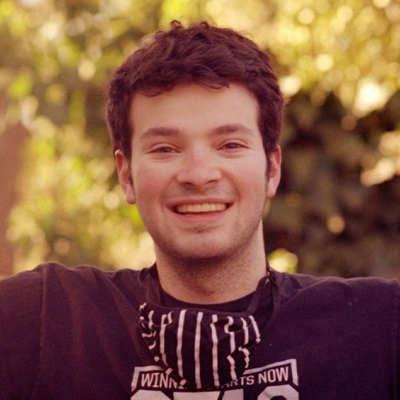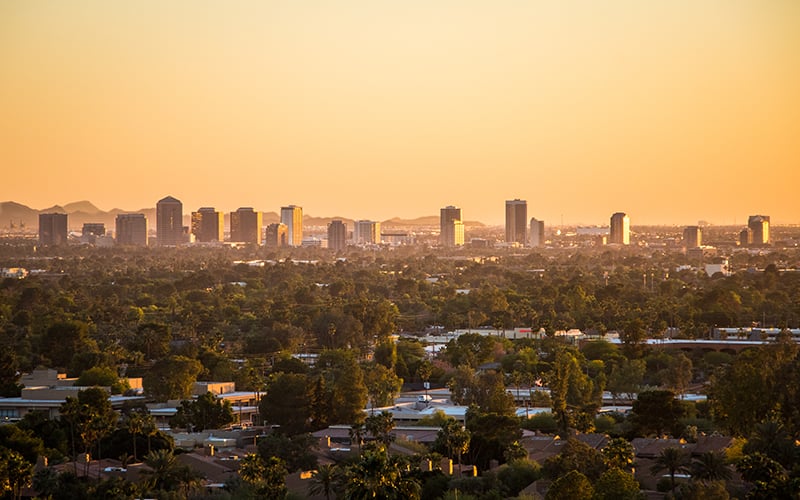PHOENIX – Scott Yates is a Denver-based entrepreneur and writer. He’s also one of a select few people around the country who can be described as a “Daylight Saving Time activist.”
Yates has been invited before countless state legislatures, which he’s exhorted to end the biannual switch between Standard Time and Daylight Time, or as he puts it, to “lock the clock.” His goal is to prevent the disruption in circadian rhythms that results from springing forward and falling back, which causes a slew of maladies: “car accidents and workplace accidents and strokes and all the rest,” he said.
Arizona avoids these hazards, as one of just two states with the clock already locked (in its case, on Standard Time). Yates said this makes it a “role model.” And while his movement is gaining ground – 18 states have passed measures locking the clock on Daylight Time, pending federal action – it’s still not exactly receiving mainstream attention.
But Yates does see one particular group show up to support these bills again and again.
“A lot of the states, when I testify,” he said, “the only other ones that show up are the golf people.”
The golf industry has historically promoted the expansion of Daylight Saving Time. One of the earliest advocates for setting the clocks ahead in the summer was an English builder named William Willett who wanted to be able to golf later in the day. And after the U.S. standardized Daylight Saving Time (DST) with the Uniform Time Act of 1966, the golf lobby was right there to push for an extra month of DST in the 1980s, which they said would garner an additional $400 million in revenue for their industry.

Arizona has its most hospitable weather for daytime golf during the winter. In summer, tee times shortly after sunrise are in the highest demand. (Photo courtesy of The Duke at Rancho El Dorado)
The thinking goes that extra daylight after work should entice more people to spend their spare time on the golf course.
“I think that most of us spend more leisure time in the afternoon,” said Calvin Schermerhorn, a history professor at ASU who once spoke about DST before the National Conference of State Legislatures. “So yeah, you may want to get out to the links early and have a nice early tee time, but the real sweet spot is in that afternoon.”
But what about in Arizona? It’s a top-10 state for golf economic output, according to advocacy group We Are Golf, yet it eschews DST.
The Uniform Time Act allowed states to opt out of Daylight Saving Time, and after a brief, unsuccessful period of DST in 1967, Arizona returned to permanent Standard Time. Most states, however, are pursuing permanent Daylight Time, which is not currently allowed under federal law, and would require an act of Congress like the bipartisan Sunshine Protection Act.
Experts say what sets Arizona apart from the rest is the punishing heat. In cooler regions, Schermerhorn said, DST might result in energy savings, but in the desert, delaying daylight means ramping up air conditioning costs.
“What’s advantageous for people in most of the country is not advantageous for those of us in the Valley,” Schermerhorn said.
And while DST proponents in the golf world trumpet early-evening tee times, the punishing Arizona heat naturally drives demand for early-morning rounds, not afternoon ones. This is particularly important in the spring and summer, when DST takes effect in other states.
“In the summertime,” said David Bataller, director of communications for the Arizona Golf Association, “your golf tee times between 7 and 9 a.m. are generally going to be filled.”
Gregg Bach, public information officer for parks and recreation at the City of Phoenix, said in an email interview that this dovetails well with the Valley lifestyle of sunrise activities like hiking.
“Golfers can play an early morning round when it’s cooler and still get to work by 8 or 9 a.m.,” Bach said. “as opposed to playing later in the evening after work when it would be much warmer.”
Not observing DST “really doesn’t have an impact on city golf courses,” he added.
Yates said Arizona’s choice of Standard Time is also justified by its geographical positioning.
“The further west you are in a time zone, the more it makes sense for you to be in Standard Time,” he said. At the western edge of a time zone, sunrise and sunset arrive later in the day, an effect DST would exacerbate. Indiana, which didn’t adopt DST until 2006, is on the western edge of the Eastern Time Zone.
Yates emphasized that a state’s citizens should get to choose whether they adopt Standard Time or Daylight Saving Time, so long as they no longer have to switch back and forth – and Arizonans seem satisfied with their current setup. When former state Rep. Phil Lovas, a Republican from Peoria, introduced a bill to implement a biannual time switch in 2015, he received copious negative feedback and withdrew his bill days later.
“It’s kind of become a badge of distinction for Arizona,” Schermerhorn said.


